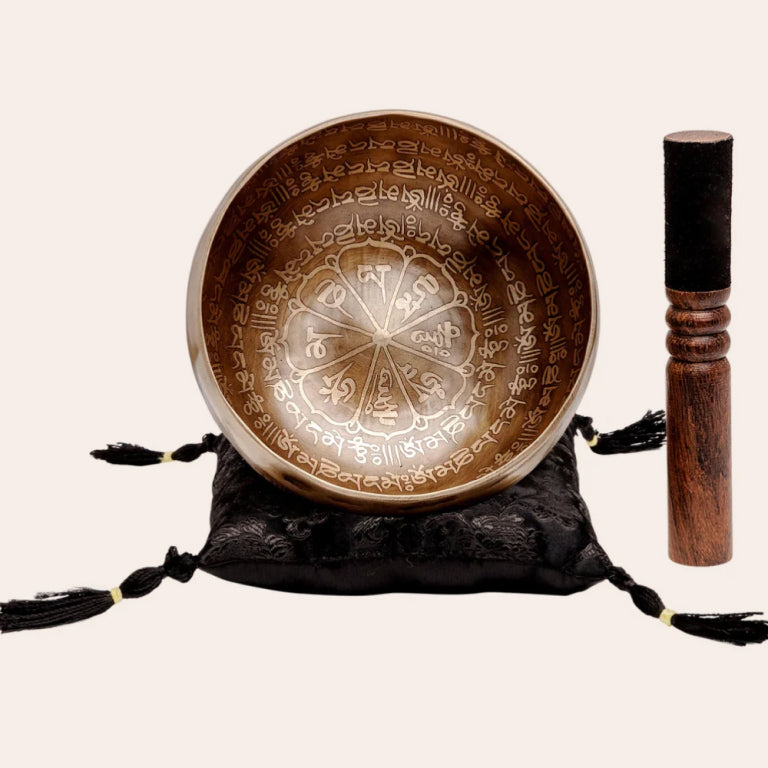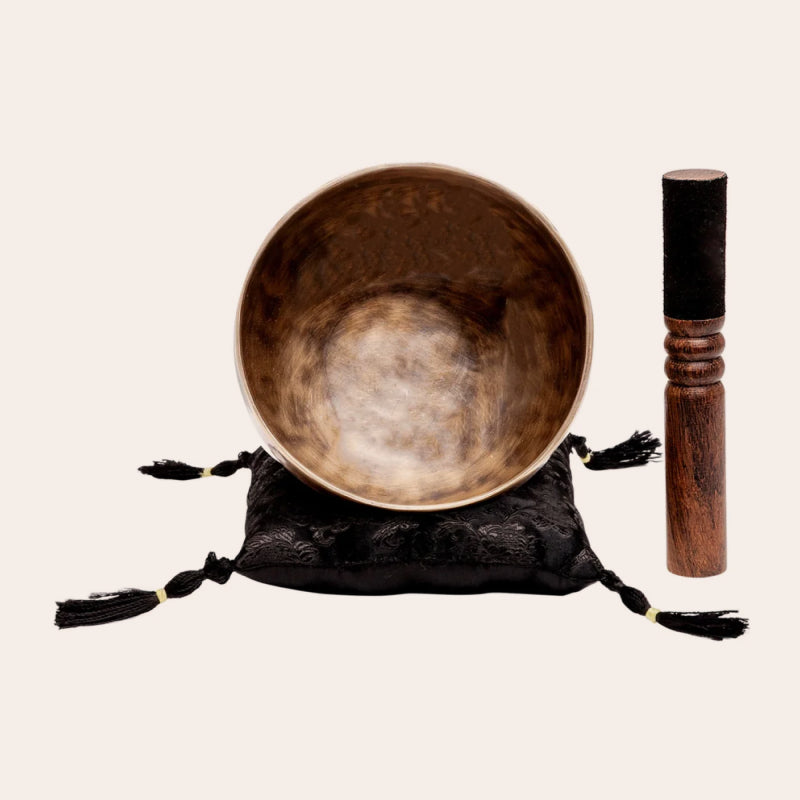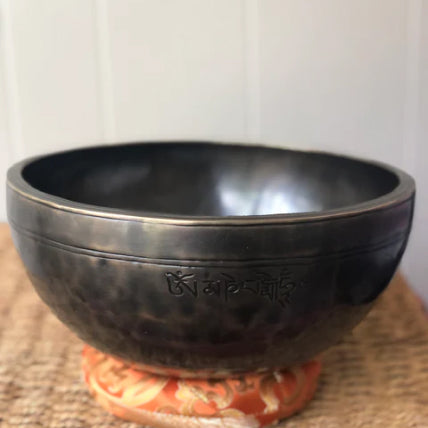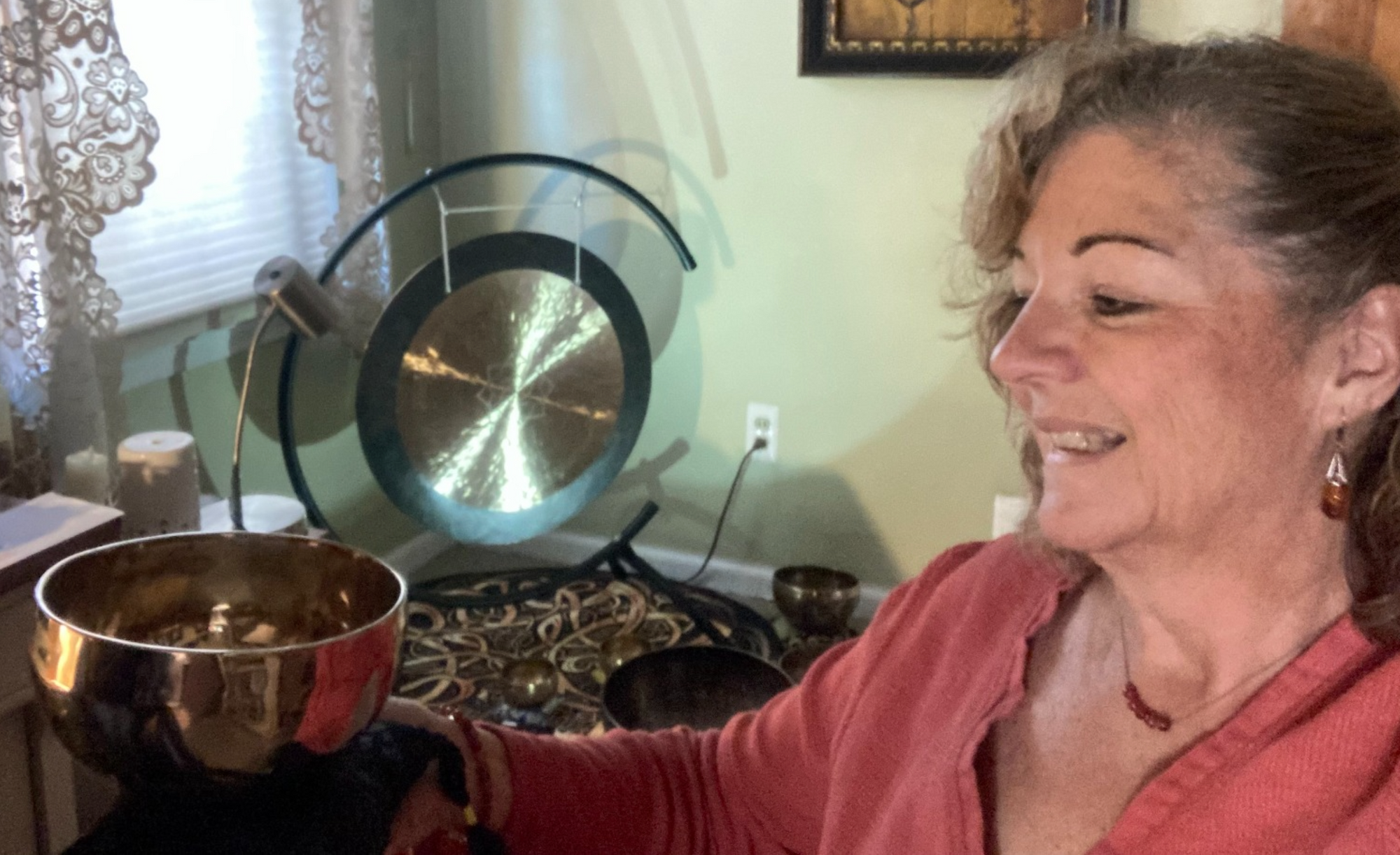The Incredible Power of The Gong: Wisdom, Technique, and Mastery with Ben Irons
"When I play a singing bowl, I search for the center of the sound. But with the gong, I’m chasing the edge." — Ben Irons
For Millenia, the gong has been both a musical instrument, vehicle for shamanic journey and item of ritual and meditative purpose.
Pulled from this full interview with Ben Irons, we've chosen to lay out the practice, philosophy, and art of playing the gong in this article.
Ben Irons is a classically trained percussionist with decades of experience playing at the highest levels of orchestral performance. He is also a certified meditation instructor and hypnotherapist; a wonderful wide range of experience, blending the rigor of Western musical training with deep introspective practice.
What Makes a Gong Unique?
Or, how are they distinct as other specialty instruments, like singing bowls, for example.
Ben explains, "They are related, yes, but not the same species. Think of them as cousins."
A singing bowl tends to express a central pitch, its fundamental tone and a range of overtones.
You often hear a single dominant tone, surrounded by a cluster of harmonics.
But with the gong, you're fully enveloped in a spectacular range of tones.
A singing bowl might exhibit overtones up to 600+ Hz or more, but a gong can cover the entire range of human hearing, from 20 Hz to 20,000 Hz.
“With a singing bowl, I’ve found myself asking ‘Where is the center of this sound?’ But with a gong, I sit in meditation and think, ‘Where is the edge?’ It just keeps expanding.”
This philosophical difference underpins the entire experience.
Sound as Texture, Not Just Tone
Ben encourages students to move beyond "just" pitch. "I like adjectives a lot," he says.
Describing a pedestal bowl he played, he said it sounded "caramelly" to him, a tone heavier than velvet, luscious but with some weight.
When speaking about the Chau gong behind him, he called it "a rain cloud" with "rolling thunder," sometimes even likening its sound to a "Texas thunderstorm" or an "electric guitar sneaking through."
This way of describing sound is central to Ben's approach: tone as feeling, texture, imagery.
Technique: The Power of Restraint
A common beginner mistake? Overplaying.
You can really bang the he mallet against the gong, and it sounds massive. But that doesn’t mean you’ve done something meaningful.
Ben cautions new players against the aggressive approach he calls "punching the gong," -- totally understandable impetus to get big sound from the gong, but Ben advises a gentler pace.
He advocates for a soft, flowing approach. "Let the mallet do the work. Let the instrument do the work. Just breathe, baby."
The Slow Roll Exercise
One of Ben’s core teaching practices is what he calls the slow roll. Start with the softest contact possible, barely audible, and allow the sound to build over 10 minutes.
“Put a timer on. Start imperceptibly. Let the overtones introduce themselves one by one. You’re not playing notes—you’re making a broth.”
This technique teaches patience, micro-control, and develops a sensitive relationship with the instrument.
Building a Relationship with Your Gong
Every gong is different. Even gongs of the same size and alloy can behave completely differently.
Ben explains that new gongs need to be "broken in" like a good pair of boots or a belt. It takes time, patience, and frequent moderate play for the gong to "get used to vibrating."
He evaluates a new instrument by:
-
Testing different zones: center, halfway, and edge
-
Listening for sustain length and tonal complexity
-
Playing with soft mallets to gauge depth and response
Short sustain may call for more rolling. Long sustain may require muting and control.
Ben also recommends humming or chanting with your gong. "Bringing your voice to the instrument is the fastest way to get to know each other," he says.
He describes moments when "mystery chants" emerge, hinting at a spiritual or energetic dialogue with the instrument.
Understanding Gong Construction (and Sizes)
Ben outlines different types of gongs:
-
Tam-tams (like the one behind him) are unpitched, flat-faced, and commonly used in orchestras. They create an indefinite spectrum of sound.
-
Nipple gongs (also called bossed gongs) have a raised center and a clear, focused pitch.
He explains that bronze is his preferred material for gongs, though silver-nickel gongs are also common, especially in European gong making traditions.
In terms of size and response, he doesn’t prescribe hard rules. However, he notes that thinner plates tend to be darker in tone, while thicker ones can sound brighter.
He also notes that playing larger gongs requires more patience and a deeper understanding of how sound waves travel. Sometimes, it takes 6 to 8 feet for the wave to fully develop.
The Right Mallets Matter
"Start with a soft mallet," Ben advises. He uses a medium-soft mallet he helped design through Dragonfly Percussion.
He encourages students not to overcomplicate mallet selection. The focus should be on technique and intention, not equipment.
Harder mallets can be used for brightness and accenting, while friction mallets are for special effects. But fundamentally, one well-chosen mallet is enough to begin.
Setting Up for a Sound Bath
Ben didn’t give a checklist, but from his insights, a few fundamentals emerge:
-
Give the instrument physical space. Gongs need room to vibrate.
-
Let the sound develop. Start soft. Grow slowly.
-
Understand the room. Placement and orientation matter.
-
Use dynamics. Avoid blasting the gong for long periods. Shape the session.
Practicing and Recording Yourself
Ben encourages students to record themselves. Not to share it, but to grow. "Recording yourself is the fastest way to learn."
He understands the vulnerability it brings. "It’s terrifying," he says, even for professionals. He suggests small tricks to make it easier, like taping the word "audience" near your camera.
He draws from years on the orchestral audition circuit, where pressure and performance anxiety are constant. Ben wants students to shift their self-talk:
“There’s no good or bad in this practice. There’s skillful and less skillful. That’s it.”
He references the idea that fear is just excitement without breath, and returns again and again to breathwork as the foundation of soundwork.
Ben’s Approach to Teaching
Ben has spent years teaching percussion to non-percussionists, often in university settings. His insight...
Most people don’t need correction; they need support.
He blends structured learning (from classical percussion) with compassionate delivery (from mindfulness and hypnotherapy).
He wants Gong School to feel like an invitation and an opening.
He also clearly states that Gong School is not about tech or recording gear. It’s about playing.
“I’m not going to teach audio recording. That’s not what this is about. Gong School is about the instrument, the body, the breath.”
Gong School: A Gateway to Mastery
This July, Ben Irons will lead a 7-week online program called Gong School in partnership with The Ohm Store.
"Whether you're just curious or ready to play professionally, the skills are the same," Ben says. The goal? To help you build comfort, intuition, and musicality through progressive, hands-on learning.
The course includes:
-
Weekly expert video modules, created by Ben specifically for this curriculum.
-
Live sessions with Ben and guest instructors
-
Guided exercises and demonstrations
-
A private group community
-
Lifetime access to the full curriculum
You don’t need to own a gong yet. You can even start with a pillow (yes really!)
Final Thoughts
“Let the mallet do the work. Let the instrument do the work. Just breathe.”
Gong School opens for enrollment on June 25th. Class begins July 14th.
To join the waitlist or learn more, visit The Ohm Store’s Gong School Page.










